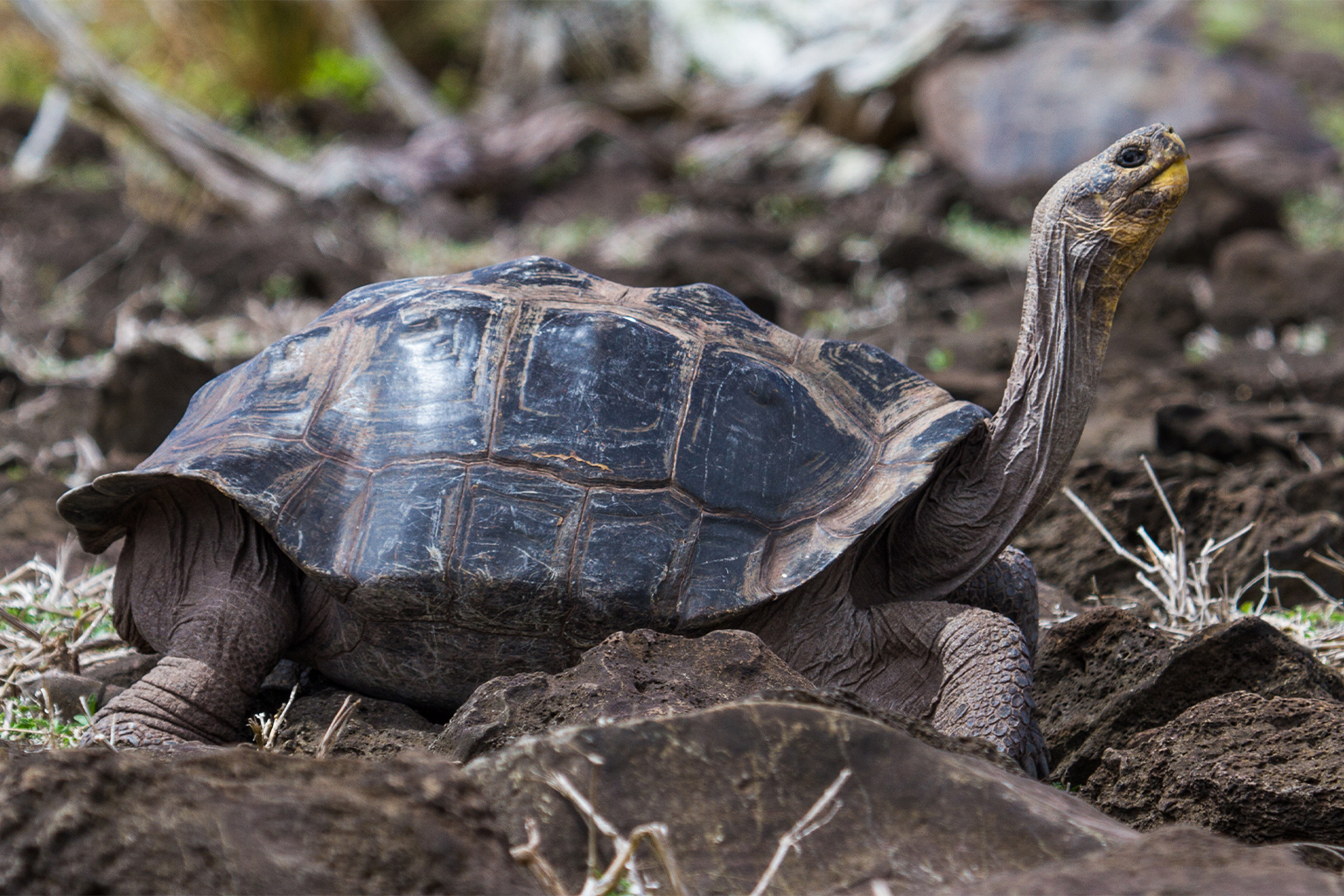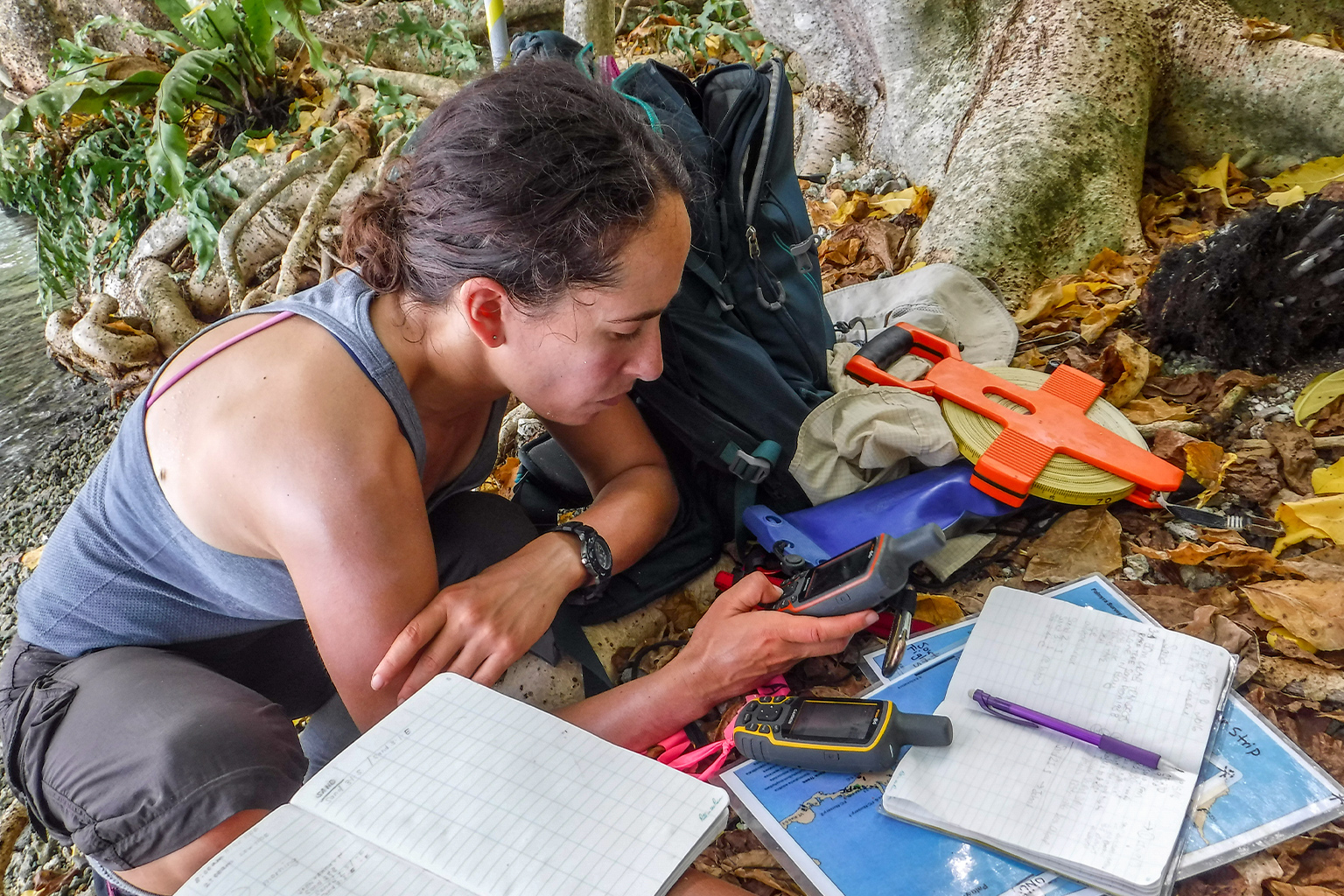- A recent study published in the journal Scientific Reports found that efforts to remove invasive vertebrates from islands were 88% successful between 1872 and 2020.
- Invasive species can be particularly devastating to delicate island ecosystems and the unique native species they harbor.
- The researchers looked at the methods, locations and target species of 1,550 eradication attempts on nearly 1,000 islands around the world.
- The authors say the results of the research provide a guide for conservation groups, scientists and countries to take on eradication projects in an effort to encourage the resurgence of native wildlife and restore ecosystems.
Giant tortoises (Chelonoidis spp.) have trundled across the Galápagos Islands for perhaps 3 million years. Over that time, they’ve evolved to survive with little food or water in the islands’ harsh desert environment. But this ability also made the tortoises an excellent source of food for mariners, who often picked up a couple when they passed by the Galápagos. The tortoises survived for months at sea until they were needed to feed ships’ crews.
This regular cull left these species ill-equipped to weather another related threat. The descendants of the rats, pigs, goats and other alien species human visitors left behind feasted on tortoise eggs and young, squashed their nests and competed with them for food. This led to the extinction of at least one species, the Pinta Island tortoise (Chelonoidis abingdonii).
Today, all of the 13 remaining giant tortoise species in the islands, genus Chelonoidis, are threatened with extinction, according to the IUCN, the global wildlife conservation authority. Some of the species are down to just a single individual. In 2019, a scientist found what turned out to be a single individual of the Fernandina Island giant tortoise (C. phantasticus), long thought to be extinct. Many of the others cling to existence only through captive-breeding programs and careful protection of tortoise eggs and young.


Until recently, it seemed these interventions would always be necessary to allow the islands’ tortoises to survive. But conservation groups, scientists and the government of Ecuador, which has jurisdiction over the Galápagos, have used methods ranging from targeted hunts to the pinpoint delivery of poison by drones to eradicate invasive pests from the islands. Now, signs are emerging that these moves have opened the door for a tortoise comeback in the Galápagos.
“We can now find hatchling Galápagos tortoises in the wild on these islands that don’t have rats,” Dena Spatz, a senior conservation scientist with Pacific Rim Conservation in Hawai‘i, said in an interview. “We’re able to reintroduce tortoises back to a lot of these islands, [and they] are now breeding and surviving.”
The efforts to rid the Galápagos of invasive species represent just one set of projects tracked in a study led by Spatz that was published Aug. 10 in the journal Scientific Reports. The research builds on the Database of Island Invasive Species Eradications, created in 2010. Spatz and her colleagues analyzed endeavors to get rid of invasive vertebrates from around the globe, in some cases tracking down firsthand accounts from people involved in or with knowledge of historical invasive species removal. The team looked at where the operations had taken place, what species were involved, and whether they succeeded.
Their analysis includes 1,550 attempts on nearly 1,000 islands, and it reveals that 88% of these projects were successful.

Holger Kreft, a professor of biodiversity, macroecology and biogeography at Germany’s University of Göttingen, who was not involved in the research, said it was surprising to see the “high success rate” of eradication efforts.
“It’s really amazing how well this works,” he said.
The work that Kreft and many other scientists have done has brought into focus the outsize role that islands play as repositories for huge numbers of plants, animals and other lifeforms, especially rare species. As the study’s authors point out, islands hold around 40% of all threatened vertebrates on just 5% of the world’s land area. Many island species are found nowhere else — part of the reason that more that 60% of the world’s extinctions in the past 500 years have occurred on islands.
Once introduced, nonnative rats, predators like feral cats, herbivores such as goats, destructive insects, and plant species can swiftly knock an island ecosystem’s delicate balance off-kilter. Mostly, it’s our fault as humans, whether we intentionally introduce errant invaders or unwittingly allowed them to hitch a ride on our shoes, in our ships or in the products we trade. Whatever the conduit, invasive species have triggered the loss of more native island biodiversity than any other cause worldwide.
Now, this study shows attempts to eradicate invasive species from islands tend to work, clearing a path for the resurgence of threatened species like the Galápagos’ giant tortoises and ultimately the restoration of island ecosystems.


The research also provides road maps for groups and countries looking to take on projects of their own, said Nick Holmes, island resilience strategy lead at The Nature Conservancy and a co-author of the paper.
“There’s no point having others reinvent the wheel,” he told Mongabay.
What’s more, invasive species eradications can help islands withstand the inevitable impacts of climate change, including sea-level rise, coral loss and more intense storms.
Sometimes unexpected benefits materialize once invasive species are gone. Take Palmyra Atoll, a U.S. territory in the central Pacific, Holmes said. Rats had reshaped the atoll’s island ecosystems, mowing down seedlings and snapping up seeds before they could take root. They also slaked their appetites with seabird eggs and chicks, withering away seabird numbers just like they have with tortoise populations in the Galápagos.
Then, in 2011, crews eradicated rats from the atoll. Since then, seedlings of native plants have taken hold, surging in abundance by more than 5,000%.
“It was like turning on a tap,” Holmes said.
The seedlings also benefited from the nutrients in the guano falling to the ground from the resurgent seabirds roosting in the canopy above.


The effects of rat eradication also cascade beyond islands’ shores. On rat-free islands in the Indian Ocean’s Chagos Archipelago, once-dwindling seabird populations have roared back. Their return has meant that more nitrogen-rich guano finds its way to the islands’ reefs. That “nutrient subsidy” fosters more algae growth, and in turn, herbivorous damselfish (Plectroglyphidodon lacrymatus) grow larger and faster on reefs ringing islands no longer encumbered by introduced rats.
David Will, head of innovation at the nonprofit Island Conservation in California and a co-author of the study, said weeding out invasive species can also influence human health, which is especially important given that islands are home to more than 11% of the world’s people. Invasive species can carry zoonotic diseases that can jump to humans. Feral cats on Mexico’s Isla Natividad off the coast of Baja California carry toxoplasmosis, a disease that’s particularly dangerous to unborn children and people with compromised immune systems.
“Once that species was removed from the island, that reservoir disappeared and the rates of toxoplasmosis very quickly disappeared,” Will said.
Will and his colleagues found that the success rate remained consistently high over the course of the study period going back to 1872. But the research also revealed that the pace of eradications has slowed in recent decades. Daniel Simberloff, a biologist and professor of environmental science at the University of Tennessee, said that’s because the simple, straightforward eradications have already been accomplished.
“That’s the low-hanging fruit,” Simberloff, who wasn’t involved in the research, told Mongabay. “Now they have harder ones.”

Spatz said shifting from islands that are small and uninhabited by people to larger spaces has increased the degree of difficulty. Larger islands or denser human populations “make the project inherently more complex,” she added.
Holmes pointed to “the conversation moonshot” that New Zealand is working toward in its bid to eliminate all of its introduced predators by 2050 and encourage the recovery of native wildlife.
The tool set available for eradication efforts has been expanding, too. Hunting and poisoning are still mainstays. But today, scientists and conservation groups are exploring “transformative innovations,” such as the use of drones and the manipulation of genes at the molecular level, Will said, technologies that could skew an invasive population toward a single sex until it can no longer reproduce.
“Those are the kinds of ideas that we’re exploring that would fundamentally change how we think about addressing the problem of invasive species on islands,” Will said.
The availability of new tools opens up the possibility of eradicating species that are more difficult to get rid of, he said.

Just as the complexity of these ventures is increasing, so are the number of countries involved. Just eight countries were responsible for 80% of the projects in the study, but around 40 have taken on eradication in just the past few decades, Spatz said.
Kreft said the study’s findings could “motivate other actors [and] other countries to also think about eradication.”
“Very often in conservation, we lack this sort of evidence,” Kreft said. Usually, he added, “We know, OK, this is working, but it’s more a gut feeling. Showing [that the] eradication of vertebrates really works and works well I think is something new and very impactful.”
That’s important, Holmes said, because the study reveals not only what has already been done but also what lies ahead.
“The flip side of the paper is also pointing to how much more there is to do,” he said. “We have something that we can use to tackle a problem that we know is real. And we have the opportunity and the obligation to … drive things forward in a way that we can see the world a little bit better than when we woke up.”
Banner image: A rhinoceros iguana on (Cyclura cornuta) Cabritos Island, Dominican Republic. The successful eradications of invasive cats and ungulates are protecting this endangered reptile. Image by Tommy Hall/Island Conservation.
John Cannon is a staff features writer with Mongabay. Find him on Twitter: @johnccannon
Citations:
Graham, N. A. J., Wilson, S. K., Carr, P., Hoey, A. S., Jennings, S., & MacNeil, M. A. (2018). Seabirds enhance coral reef productivity and functioning in the absence of invasive rats. Nature, 559(7713), 250. doi:10.1038/s41586-018-0202-3
Jensen, E. L., Gaughran, S. J., Fusco, N. A., Poulakakis, N., Tapia, W., Sevilla, C., … & Caccone, A. (2022). The Galapagos giant tortoise Chelonoidis phantasticus is not extinct. Communications Biology, 5(1), 1-8. doi:10.1038/s42003-022-03483-w
Kier, G., Kreft, H., Lee, T. M., Jetz, W., Ibisch, P. L., Nowicki, C., … Barthlott, W. (2009). A global assessment of endemism and species richness across island and Mainland regions. Proceedings of the National Academy of Sciences, 106(23), 9322-9327. doi:10.1073/pnas.0810306106
Spatz, D. R., Holmes, N. D., Will, D. J., Hein, S., Carter, Z. T., Fewster, R. M., … Russell, J. C. (2022). The global contribution of invasive vertebrate eradication as a key island restoration tool. Scientific Reports, 12(1). doi:10.1038/s41598-022-14982-5
Wolf, C. A., Young, H. S., Zilliacus, K. M., Wegmann, A. S., McKown, M., Holmes, N. D., … Croll, D. A. (2018). Invasive rat eradication strongly impacts plant recruitment on a tropical atoll. PLOS ONE, 13(7), e0200743. doi:10.1371/journal.pone.0200743
FEEDBACK: Use this form to send a message to the author of this post. If you want to post a public comment, you can do that at the bottom of the page.
